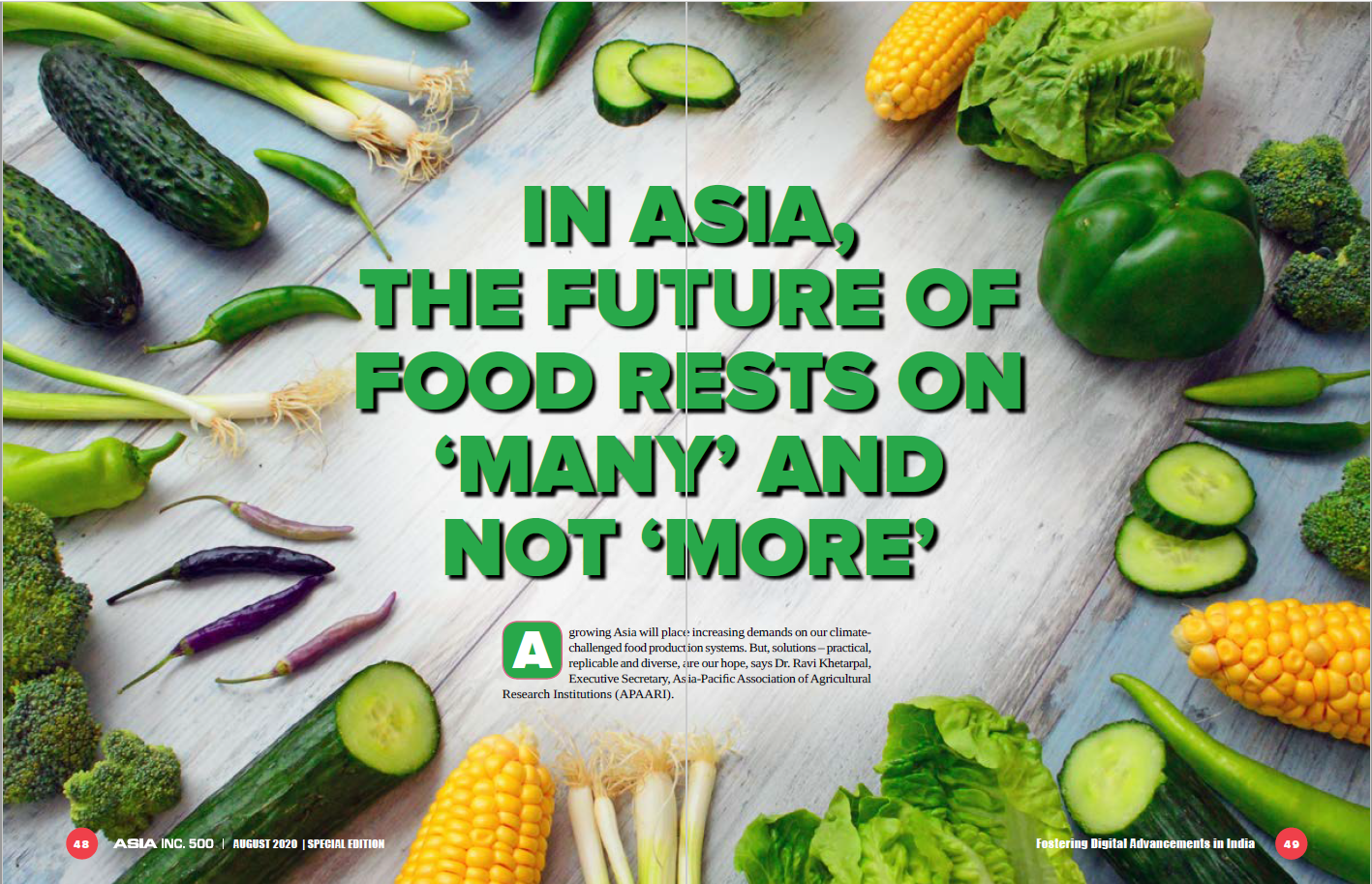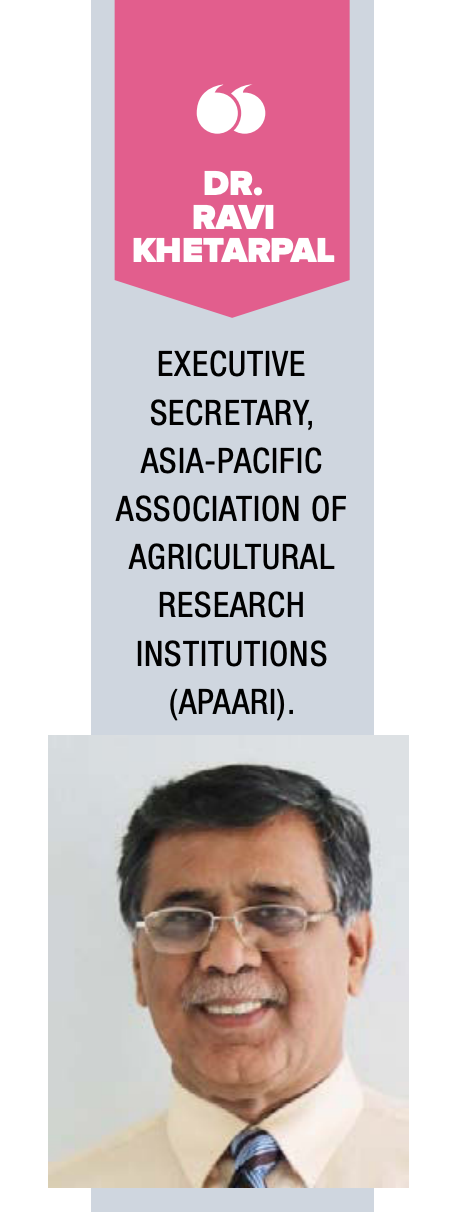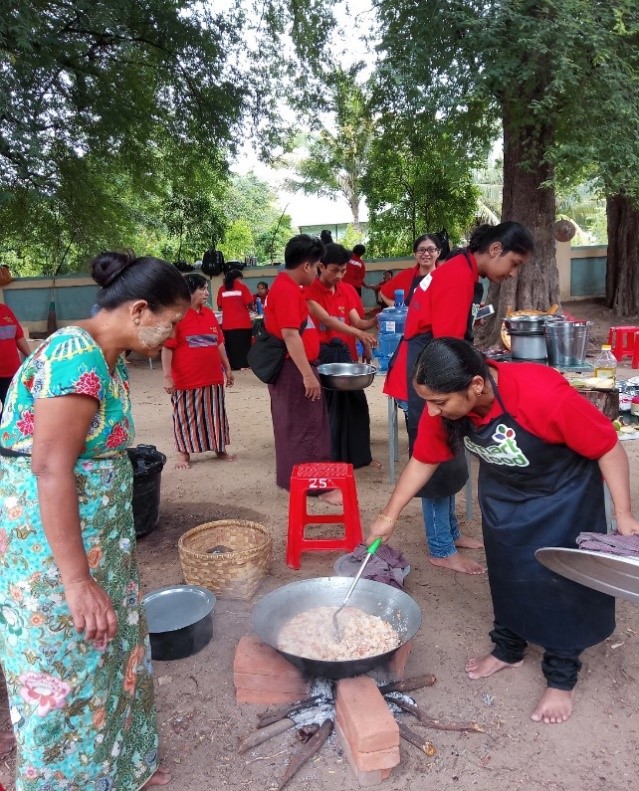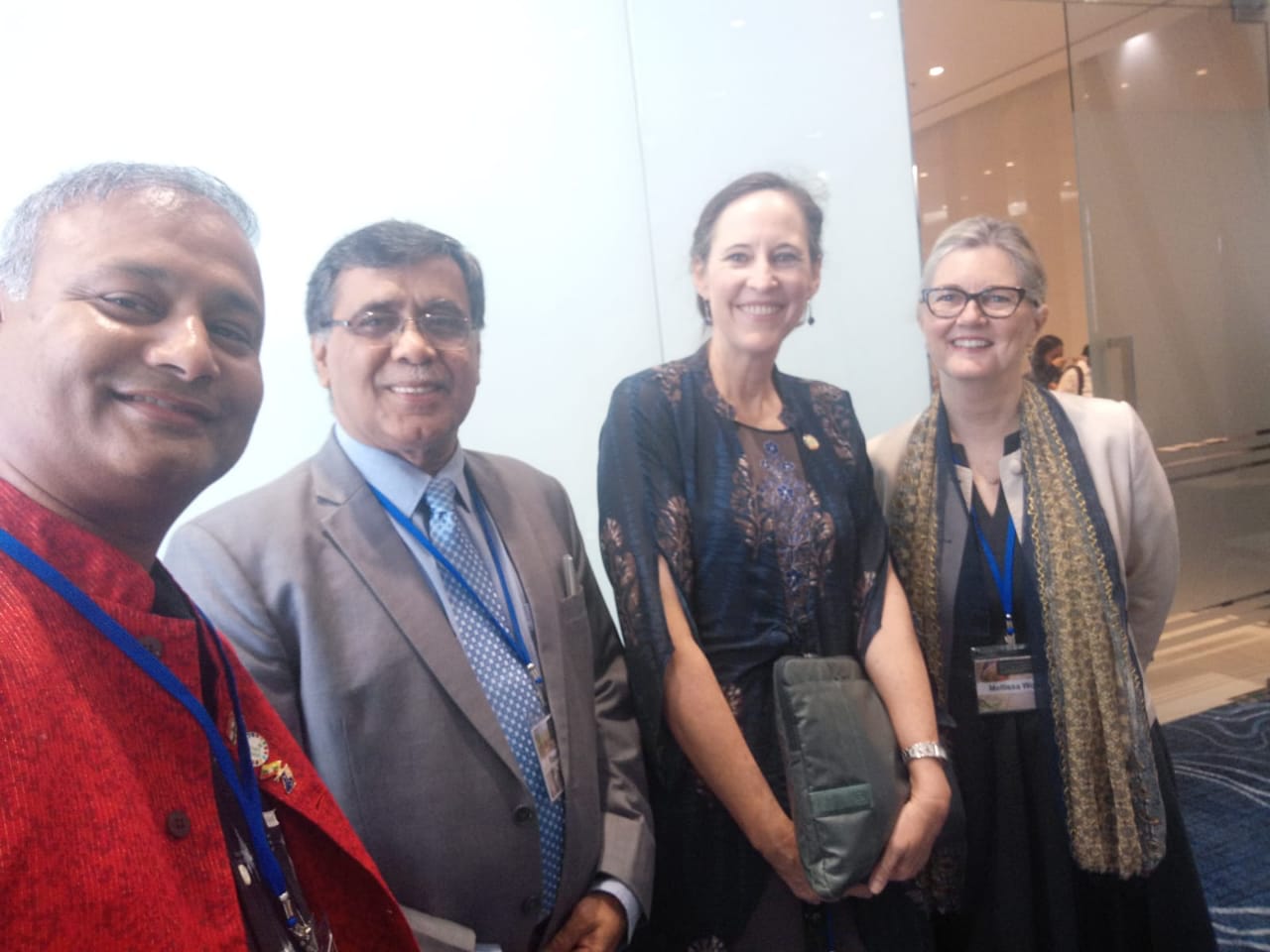In Asia, the future of food rests on ‘many’ and not ‘more’

A growing Asia will place increasing demands on our climate-challenged food production systems. But, solutions – practical, replicable and diverse, are our hope, says Dr. Ravi Khetarpal, Executive Secretary, Asia-Pacific Association of Agricultural Research Institutions (APAARI).
Q. What have been some of the biggest trends in Asian agriculture?
Recent studies by Rabobank Economic Research Group have shown that the world’s agriculture production nearly doubled in the last 50 years, while the total area harvested only increased 32%. Crop intensification and use of appropriate technologies eventually led to yield enhancement. Expansion of arable land, noticeably in Asia, has been less important in increasing output, but Asia’s contribution to increasing the world’s agricultural output has been significant. East Asia, where the output tripled with a mere 11% increase in harvest area, leads the trend.
Asia’s agribusiness and food & agriculture companies are showing a positive trend for growing in size and scope to meet the increasing demand, changing national policies, rising organisational capabilities, and are attempting integration and consolidation throughout the value chain. Asia is playing a significant role in the global food chain, accounting for 19% of total food and agriculture exports and 31% of the total food and agriculture imports.


Q. What are some of the biggest challenges to agriculture in Asia?
With half a billion undernourished people, nearly three million of those need to be lifted out of hunger every month until the end of 2030 to achieve the SDGs in Asia. The pace of growth to achieve SDGs in the region is already slow, notes the United Nations Economic and Social Commission for Asia and the Pacific (UNESCAP) in a 2019 report.
Its large and growing population, coupled with rising incomes and a burgeoning middle class, will see Asia drive the demand for food, agricultural commodities and resources. Production will find it hard to keep pace owing to limited arable land, inadequate water and inefficient resource management combined with stagnating yields, environment and soil fatigue, and limited access to improved infrastructure. Consequently, Asia’s, and especially China’s, need for imports and investments locally and abroad is likely to increase agribusiness.
Asia is also the most disaster-afflicted region; 89 percent of world’s disaster-hit people are in Asia. Storms like Haiyan, which left more than 6,000 dead in the Philippines in November 2013, are getting stronger with increasing sea temperatures. The average temperature in the Asia-Pacific region could rise by as much as 2 degree Celsius by 2030 and 7 degree Celsius by 2070. Annual rainfall is also expected to increase in several parts of Asia while arid and semi-arid areas would become drier.
Rising sea levels will greatly affect small atoll Pacific Island countries, Bangladesh, the Maldives and Viet Nam. A 30-centimetre increase is expected in the Mekong Delta by 2050, and this increase, coupled with salinity intrusion, could lead to loss of some 420,000 hectares arable land. The IPPC estimates that a million people along the coasts of South and South-East Asia face risk of flooding.
Afghanistan, Bangladesh, India and Nepal are particularly vulnerable to declining crop yields due to glacial melting, floods, droughts and erratic rainfall. With Cambodia, Lao PDR and Myanmar, these countries are most vulnerable to climate change.
Land degradation, loss of biodiversity, biotic and abiotic stresses, coupled with and natural and human-made disasters, continue to hit agricultural production, food security and nutrition. Recently, COVID-19 has added to the woes of Asia-Pacific. It is hoped that governments’ plans to invest more in agriculture will keep economies in shape. The pandemic, unlike other disasters, is impacting the whole value chain from farmers’ disruption of inputs access to logistics of produce markets being hampered, and from processors and retailers not being able to fully operate to the impact on consumer purchase owing to lockdowns and looming recessions.
Q. How do we tackle these challenges?
There are no quick fixes. Massive multi-pronged efforts are needed to make livelihoods and food systems resilient to climate variability and extreme events. To start with, a look at the whole food system is needed.
One of the solutions we are a part of is the Smart Food initiative founded by ICRISAT (International Crops Research Institute for the Semi-Arid Tropics) and led by an Asian-Afro consortium. It hopes to tackle problems of nutrition, environment and producer livelihoods, especially rural poverty, in unison – with holistic solutions. This is best explained through the Smart Food Triple Bottom Line – provide solutions that are good for you (nutritious and healthy), the planet (environmentally sustainable) and the producers (especially smallholder farmers but also small-medium entrepreneurs that are often pioneers in building markets).
The Smart Food Triple Bottom Line factors in the producers’ plight but also advocates solutions that approach these three areas in unison. This is recommended as a framework for food system solutions. It will help us breakdown discipline and sector silos; as well as avoiding solutions that tackle one area while harming another.
The Smart Food Triple Bottom Line approach is complemented by identifying some commodities that could be defined as Smart Foods (i.e. food that is good for you the planet and the farmer) and focusing on diversifying staples with these commodities. By focusing on staples, which typically make up 70% of the plate in Asia, often refined and the least nutritious part of the meal eaten three times a day, we can have a major impact on the health of the consumer and the planet and well-being of the farmer.
Diversification with food that fits the criteria of being a Smart Food will help dissolve boundaries of the “Food System Divide”. This is a divide where the largest investments have for decades gone into the Big3–rice, wheat and maize– by way of government support, private industry investment, R&D, product development and even development aid.
Diversification will involve efforts in adapting agricultural practices, in developing products and market linkages, and ultimately consumer demand. It is a path we must take if we are to achieve sustainable agriculture and food systems in Asia-Pacific.
Q. Who can achieve this?
There can be no solo effort. Consumers, civil society, private industry, researchers and governments have to join hands to drive such initiatives. The Smart Food Triple Bottom Line has to guide us all. Country-level policies can play a critical role in mobilizing stakeholders.

Q. How is APAARI helping?
APAARI, an apolitical multi-stakeholder body to bring collective change in agri-food systems of the region, aims to promote adoption of Smart Food by advocating policy support, research and development. A strong knowledge management programme would be at the core of our strategy.
To identify Smart Foods that can be adapted and adopted in the region, APAARI organized a regional expert consultation on Underutilized Crops (UUCs) for food and nutritional security in November 2017. It was then agreed that mapping and building of a baseline database on UUC species and diversity, documentation and validation of indigenous/traditional knowledge/ethnobotany, culinary recipes and local uses of UUCs be undertaken immediately.
A clear-cut strategy for Asia-Pacific region is being developed to ensure implementation, promotion and adoption of good practices that will involve persistent advocacy coupled with efforts at behaviour change.
Accordingly, APAARI intends to develop modules for stakeholders to explain benefits of Smart Food crops to smallholder farmers and rural communities while linking to health issues and malnutrition. We are also trying to create awareness programmes to strengthen the farmer’s connect to value chains.
APAARI is leveraging its multi-stakeholder partnership base as such mega initiatives call for significant human and financial resources, strong partnerships and relevant linkages in diverse domains of research, innovation and development with an active involvement of the private sector.
Q. What would be your biggest wish for agriculture in Asia?
My wish is that Smart Food becomes a household name in Asia-Pacific be it for a farmer, industry, a businessperson, an urban consumer or a policymaker.
My second wish is that a Smart Food Triple Bottom Line is used in all solutions implemented by businesses to governments to scientists.
Smart Foods are in the interest of the people, planet and producers alike. To realize their benefits, we need to link and synergize other existing programmes along the value chain. A holistic approach presents an opportunity for capacity building as issues around nutrition/health, environment and farmer welfare must be tackled in unison.
